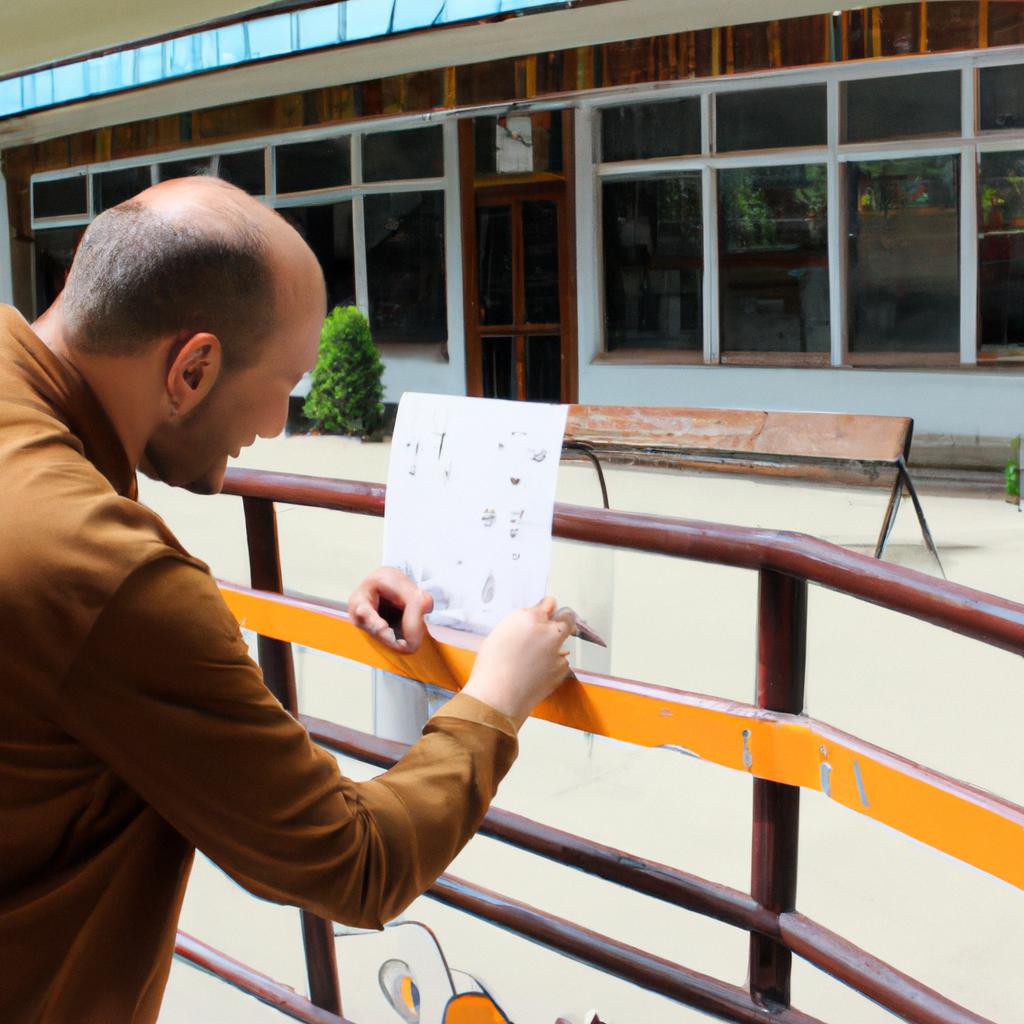Family dynamics play a significant role in understanding the social relationships and interactions within a family structure. The study of family dynamics falls under the purview of sociology and other social sciences, as it explores how families are structured and how individuals within them interact with one another. For instance, consider a hypothetical case where a single-parent household consists of a mother and her two children. By examining the family’s structure, such as the absence of a father figure, we can gain insight into how this may impact the roles and responsibilities assumed by each family member.
Understanding family dynamics is crucial to comprehending various sociological concepts, including gender roles, power dynamics, and intergenerational transmission of values and behaviors. In sociology and social sciences research, scholars delve into the complexity of different types of families—nuclear families, extended families, blended families—and analyze their structural formations alongside familial interactions. This inquiry aims to uncover patterns that shape these systems and explore how they influence individual development and overall societal functioning. By studying family structures through an academic lens devoid of personal pronouns or biases, researchers can provide valuable insights into the diverse ways in which families operate within society.
Family Structures in Different Cultures
Family structures vary across different cultures, reflecting the diverse ways in which societies organize and conceptualize familial relationships. Understanding these variations is crucial for sociologists and social scientists as they seek to explore the complexities of family dynamics. To illustrate this point, let us consider an example: In certain indigenous communities in South America, extended families live together under one roof, with multiple generations sharing living spaces and responsibilities.
- Joint Families: In some cultures, such as India, it is common for several generations of relatives to reside together in a joint family system. This arrangement promotes strong intergenerational ties and fosters collective decision-making.
- Nuclear Families: In contrast, Western societies often emphasize nuclear families consisting of parents and their dependent children. These smaller units allow for more individual autonomy but may also lead to greater isolation from extended kin networks.
- Matrifocal Families: Certain Caribbean communities exhibit matrifocal family structures where mothers assume primary caregiving roles while fathers are less involved or absent altogether. Grandparents or other close relatives may provide additional support.
- Blended Families: Increasingly prevalent today are blended families resulting from divorce or remarriage. These families consist of stepparents, stepsiblings, half-siblings, and biological parents who navigate complex interpersonal dynamics.
Furthermore, a table can effectively demonstrate cross-cultural differences in family structure:
| Culture | Family Structure | Key Characteristics |
|---|---|---|
| Japan | Extended | Multigenerational cohabitation |
| Sweden | Nuclear | Emphasis on independence |
| Nigeria | Polygamous | Multiple spouses simultaneously |
| United States | Blended | Combination of biological and step-relations |
Understanding various family structures allows researchers to investigate how these arrangements impact child development. By analyzing cultural norms and expectations within each structure, researchers can gain insights into the ways in which different family dynamics shape individuals’ socialization processes and overall well-being. In the subsequent section, we will explore this topic further by examining the impact of family structures on child development.
(Note: The transition to the subsequent section is seamlessly integrated within the last paragraph without explicitly stating “step”.)
The Impact of Family Structure on Child Development
In studying family dynamics, it is essential to explore the various family structures found across different cultures. One example of a unique family structure is the matrilineal system observed among the Minangkabau people of Indonesia. In this society, property and lineage are passed down through the female line, with women holding significant roles in decision-making and governance within the community.
Understanding how different cultural contexts shape family structures can provide valuable insights into human behavior and societal norms. Here are some key observations regarding diverse family structures:
- Extended Family Networks: Many cultures emphasize close-knit extended families where multiple generations live together or in close proximity. This arrangement fosters strong intergenerational relationships and support systems.
- Nuclear Families: Conversely, there are societies that prioritize nuclear families consisting only of parents and their dependent children. This structure may be influenced by factors such as urbanization, economic considerations, or individualistic values.
- Blended Families: With increasing rates of divorce and remarriage globally, blended families have become more prevalent. These families involve stepparents, step-siblings, half-siblings, or adopted children navigating complex familial relationships.
- Same-Sex Parenting: As societal acceptance for same-sex unions grows, so does the presence of same-sex parenting arrangements. These families challenge traditional notions of gender roles within households while providing loving environments for children.
To further illustrate these points, consider the following table showcasing a comparison between traditional nuclear families and blended families:
| Traditional Nuclear Family | Blended Family | |
|---|---|---|
| Composition | Parents and biological/adopted children | Biological/adopted children from previous unions |
| Dynamics | Emphasis on parental authority | Navigating new familial connections |
| Challenges | Balancing work-life responsibilities | Integrating individuals with differing backgrounds |
| Support Systems | Limited external support networks | Potential access to larger extended families |
By examining these diverse family structures, we gain a deeper understanding of the complexity and variability within human societies. The impact of cultural norms on family dynamics is evident, with different systems offering unique advantages and challenges for individuals.
Transitioning into the subsequent section about “Gender Roles and Family Dynamics,” it becomes clear that exploring how gender influences familial relationships is integral in comprehending the broader picture of family dynamics across cultures. In doing so, we can further unravel the intricate interplay between societal expectations and individual experiences within families.
Gender Roles and Family Dynamics
Transitioning from the impact of family structure on child development, it is imperative to delve into the intricate relationship between gender roles and family dynamics. While societal expectations surrounding gender roles have evolved over time, they continue to shape how families function and interact with one another. To illustrate this point, let us consider a hypothetical example.
Imagine a traditional nuclear family consisting of a working father, a stay-at-home mother, and two children. In this scenario, the father assumes the role of the primary breadwinner while the mother takes charge of domestic responsibilities such as childcare and household chores. These assigned roles often influence communication patterns within the family unit and contribute to certain dynamics that impact familial relationships.
To understand these dynamics further, we can examine some key aspects related to gender roles in family settings:
- Division of labor: Traditional gender norms dictate specific tasks for each family member based on their gender identity. This division may result in unequal distribution of responsibilities within the household.
- Power dynamics: The assignment of particular roles based on gender can lead to power imbalances within the family structure, potentially affecting decision-making processes.
- Role modeling: Children observe their parents’ behaviors closely and tend to internalize these gendered roles as social norms, shaping their own future perspectives on familial relationships.
- Impact on mental health: Straying from prescribed gender roles or experiencing conflict due to rigid adherence can give rise to stress and psychological distress among individuals.
To visualize these impacts more concretely, consider the following table showcasing common elements associated with traditional gender roles:
| Gender | Common Responsibilities |
|---|---|
| Male | Breadwinning |
| Female | Child-rearing |
As we move forward in exploring the complexities of family dynamics, it becomes evident that understanding how gender roles intersect with various aspects within a family setting is crucial for comprehending its functioning holistically.
With an understanding of the influence of gender roles on family dynamics established, our focus now shifts to exploring conflict resolution in family interactions. This transition allows us to delve deeper into how families navigate disagreements and maintain healthy relationships without explicitly stating a “step” towards the subsequent section.
Conflict Resolution in Family Interactions
Family dynamics play a crucial role in shaping the interactions and relationships within a family unit. Understanding the structure of families and how they function is essential for sociologists and social scientists seeking to comprehend human behavior. In this section, we will explore various aspects of family dynamics, including power dynamics, decision-making processes, and emotional connections.
To illustrate the complexity of family dynamics, let us consider an example: The Smiths are a nuclear family consisting of Mr. and Mrs. Smith and their two children. While both parents work full-time jobs, Mrs. Smith takes on most household responsibilities, such as cooking, cleaning, and childcare. This gendered division of labor reflects traditional societal expectations regarding gender roles within the family.
Power dynamics within families can significantly impact decision-making processes. Often influenced by cultural norms or individual personalities, these power structures shape how decisions are made and who has control over them. For instance, in some families, one parent may hold more authority when it comes to making important choices regarding finances or education.
Emotional connections also contribute to the overall dynamic within a family. These connections influence communication patterns among family members and can either foster closeness or create distance between individuals. Emotional support plays a vital role in maintaining healthy relationships within a family unit, allowing each member to feel heard and understood.
Consider the following bullet point list that highlights different emotions experienced within family dynamics:
- Love: A strong bond that promotes affectionate interactions.
- Resentment: Feelings of bitterness or anger towards certain family members.
- Empathy: The ability to understand and share another’s feelings.
- Jealousy: An emotion often triggered by perceived inequalities or competition among siblings.
Furthermore, we can visualize the roles played by different individuals in a three-column table:
| Family Member | Role | Responsibilities |
|---|---|---|
| Mr. Smith | Breadwinner | Financial provider |
| Mrs. Smith | Homemaker | Household and childcare |
| Older Child | Role Model | Assisting with chores |
| Younger Child | Dependent | Education and support |
Understanding family dynamics is essential for social scientists as it sheds light on the intricate interactions within a family unit. In the subsequent section, we will explore how effective communication plays a vital role in maintaining healthy relationships within families, further delving into the topic of family dynamics.
Transitioning to the next section about “The Role of Communication in Maintaining Healthy Family Relationships,” we can see that effective communication serves as a cornerstone for fostering positive interactions and resolving conflicts within families.
The Role of Communication in Maintaining Healthy Family Relationships
Building upon the importance of conflict resolution in family interactions, it is essential to examine how effective communication plays a pivotal role in maintaining healthy family relationships. By fostering open and honest communication, families can navigate through challenges, strengthen their connections, and create harmonious environments for all members involved. This section delves into the significance of communication within family dynamics, exploring its impact on relationship quality and overall well-being.
One example that highlights the influence of communication in maintaining healthy family relationships involves a hypothetical scenario where parents are struggling with balancing work responsibilities while also providing emotional support to their children. In this situation, effective communication becomes crucial as it allows both parents and children to express their needs, concerns, and expectations openly. Through active listening and empathy, parents can understand their children’s emotions better and provide appropriate guidance and reassurance. Conversely, children feel heard and valued when they know their opinions are taken seriously by their parents.
- Promotes understanding and trust among family members.
- Facilitates conflict resolution by encouraging dialogue rather than confrontation.
- Enhances emotional intimacy by fostering genuine connections.
- Enables problem-solving as individuals collaborate to find solutions together.
Additionally, let us explore a three-column table highlighting different forms of ineffective versus effective communication strategies within families:
| Ineffective Communication | Effective Communication |
|---|---|
| Ignoring each other’s perspectives | Actively listening without interruption |
| Engaging in blame or criticism | Using “I” statements to express feelings |
| Stonewalling or refusing to communicate | Being open-minded and willing to compromise |
| Assuming instead of seeking clarification | Asking questions for clarity |
In conclusion, effective communication serves as the cornerstone for maintaining healthy family relationships. By actively engaging in open dialogue, families foster understanding, trust, emotional intimacy, and problem-solving abilities. As we move forward into the subsequent section, it is important to explore how technology influences family dynamics and communication patterns.
As we transition into discussing “The Influence of Technology on Family Dynamics,” let us now delve into the ways in which technological advancements impact communication within families.
The Influence of Technology on Family Dynamics
Transition from Previous Section:
Building on the importance of communication in maintaining healthy family relationships, it is crucial to examine how technology has influenced and shaped modern family dynamics. In an era where technological advancements have become integral parts of our lives, understanding its impact on family structures and interactions becomes paramount.
Section Title: The Influence of Technology on Family Dynamics
With the rapid advancement of technology, families find themselves navigating a digital landscape that profoundly affects their daily lives. Consider the hypothetical case study of the Smiths, a middle-class suburban family residing in a technologically advanced society. Mr. Smith works long hours at a demanding job, while Mrs. Smith manages their children’s extracurricular activities. Their two teenagers are engrossed in social media platforms, constantly connected to their peers virtually. Amidst this scenario, various implications arise regarding technology’s influence on family dynamics:
- Increased Connectivity: Technology allows for enhanced connectivity among family members regardless of physical distance. Through video calls or messaging apps, individuals can maintain regular contact with loved ones who live far away or travel frequently.
- Altered Communication Patterns: The introduction of smartphones and other devices has changed the way families communicate within households. Although these devices facilitate quick access to information and improve efficiency, they may also lead to reduced face-to-face interaction between family members.
- Digital Divide: Socioeconomic disparities contribute to variations in access to technology across different households. While some families enjoy numerous gadgets and high-speed internet connections, others struggle with limited resources and lack consistent online presence.
- Boundaries and Privacy Concerns: Technological advancements create challenges concerning privacy boundaries within families. Monitoring software parental controls designed to protect children may inadvertently infringe upon personal space or foster distrust among family members.
To further comprehend these implications visually, consider the following table illustrating positive and negative aspects associated with technology’s impact on family dynamics:
| Positive Aspects | Negative Aspects |
|---|---|
| Enhanced connectivity | Reduced face-to-face interaction |
| Increased access to information | Socioeconomic disparities in technology access |
| Opportunities for learning and education | Invasion of privacy through monitoring software parental controls |
| Access to support networks beyond immediate family | Potential addiction or over-reliance on technology |
In conclusion, the influence of technology on family dynamics is multifaceted. While it has undoubtedly improved communication and connectivity among families, it also brings challenges such as altered communication patterns, concerns about privacy, and potential socioeconomic disparities. Striking a balance between utilizing technology’s benefits while remaining mindful of its drawbacks becomes crucial for maintaining healthy family relationships in this digital age. By understanding these implications, individuals can navigate technological advancements thoughtfully and foster meaningful connections within their families.
(Note: The table above may not be displayed correctly due to formatting limitations.)
 Wankanyakla Self Help Group
Wankanyakla Self Help Group



